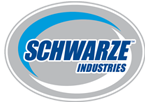With their smaller wheelbases, non-CDL sweepers are very maneuverable, which is important when sweeping tight, confined areas. Non-CDL sweepers also tend to be lower in operating and maintenance costs and total cost of ownership.
Municipalities are very budget conscious. Non-CDL sweepers are less expensive than full-size sweepers, and a non-CDL sweeper operator can be paid a lower wage than a CDL operator who earns a higher, premium wage in the marketplace. Operating a non-CDL sweeper does not require the same expertise and skill set required for operating a CDL sweeper.
Many of these smaller sweepers are also more user-friendly, allowing these sweepers to be easier to train new users to operate.
While the process differs in many states, the testing involved to obtain a CDL tends to be strenuous and includes both written and a three-part skills exams. There are also a multitude of additional legal requirements that go along with running a CDL unit including training. This typically leads to a larger labor pool to choose from in a very competitive landscape.
Generally non-CDL units are going to have close to the same size engine due to emission controls today since we’re kind of limited to the size of the wheelbase for these units to get that equipment in there, but the suspension, axles and brakes will all be the same compared to a CDL-unit.
Depending on the type of sweeping performed a CDL unit may be appropriate. However, for light industrial applications, a non-CDL unit may the most cost effective and beneficial tool. Be sure to work with the manufacturer to evaluate your needs and staffing concerns before making any buying decisions.
Submit your Schwarze Story here: Schwarze Stories

